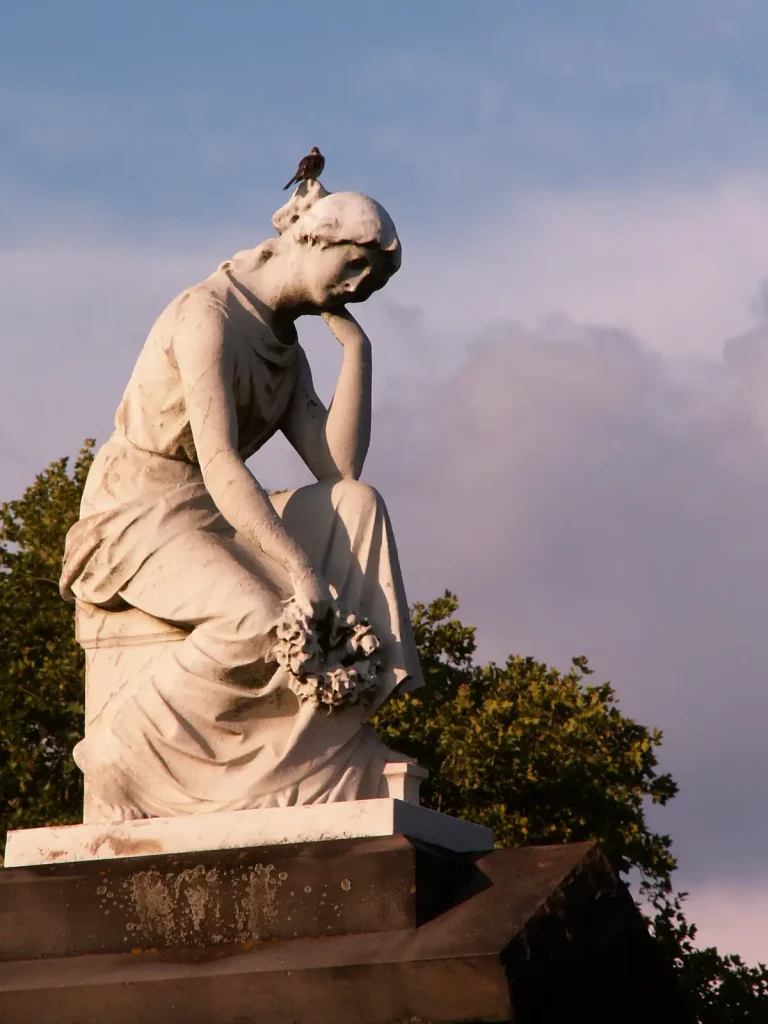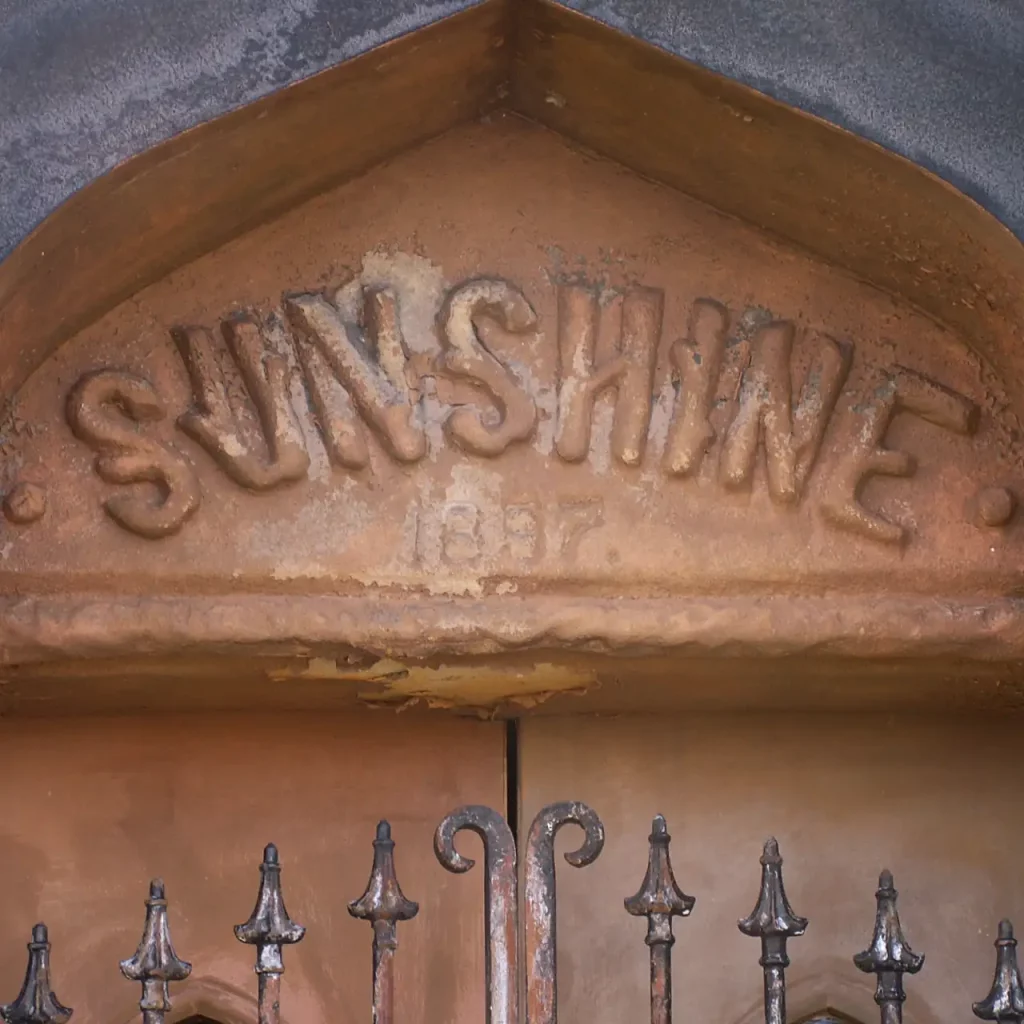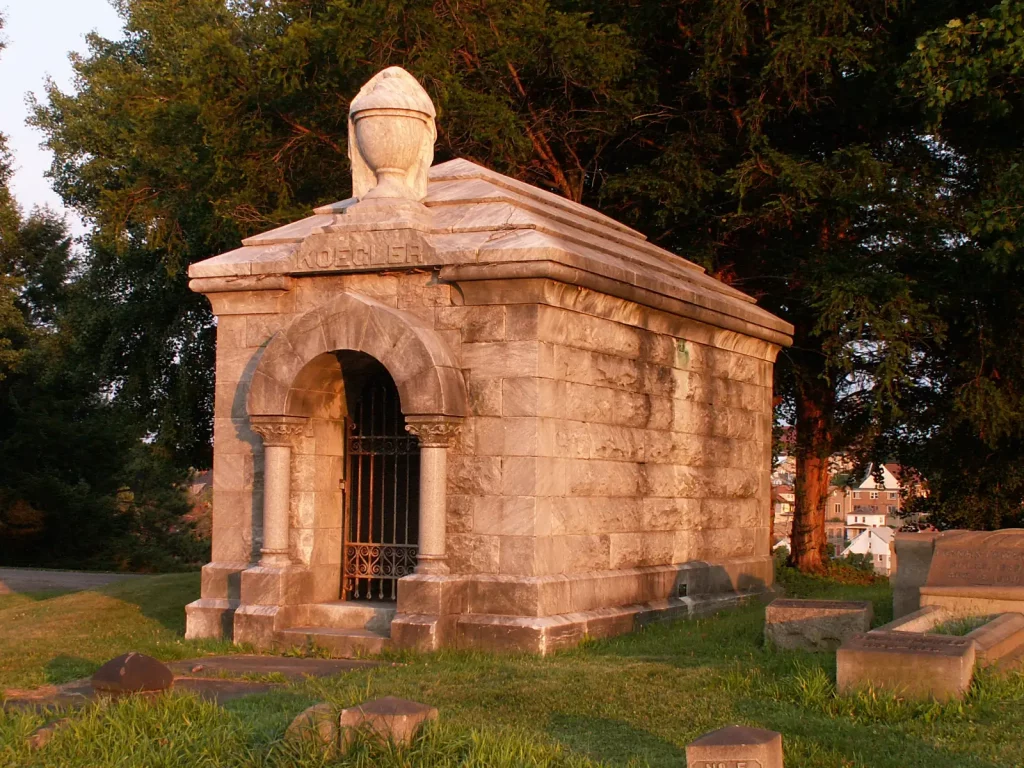
A standard-issue Romanesque mausoleum, though unusually deep in proportion to its width; but irresistibly picturesque in the last golden rays of evening sun.
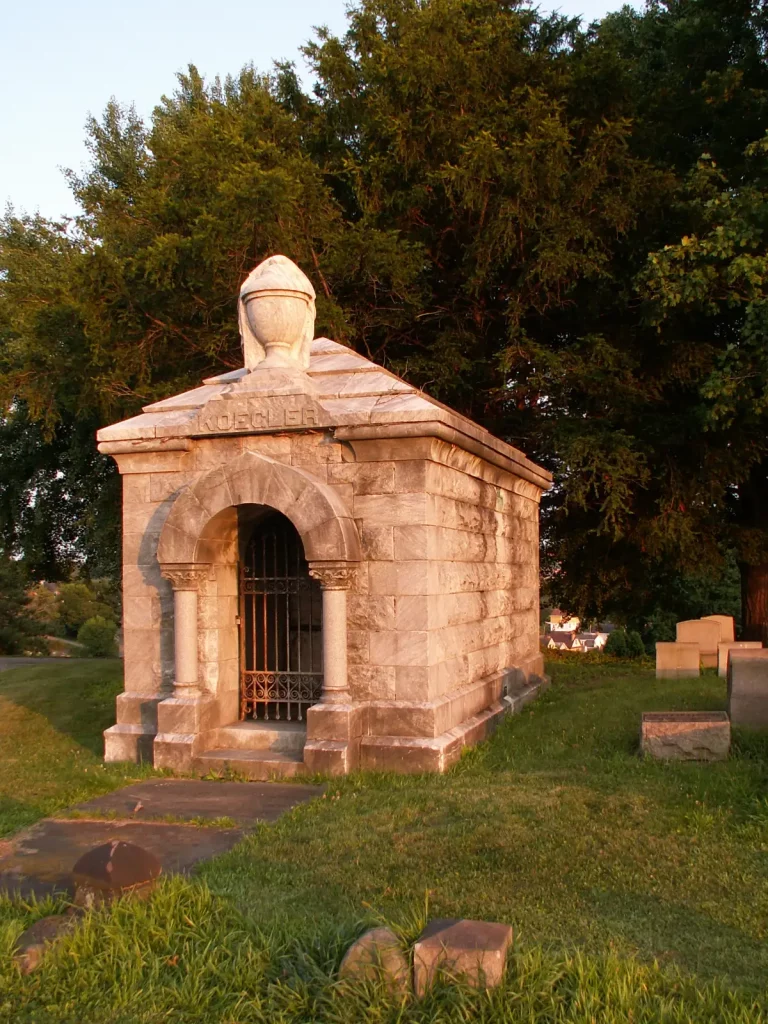

A standard-issue Romanesque mausoleum, though unusually deep in proportion to its width; but irresistibly picturesque in the last golden rays of evening sun.


On its sketchy Web site, the South Side Cemetery claims to have been founded in 1873; but there are monuments older than that, suggesting either that there was a cemetery on this site before 1873, or that some gravestones were moved from an earlier site (which sometimes happened when an older cemetery was engulfed by the city). This stone is dated 1840, and it is definitely in the style of the 1840s, not much later. Time has badly damaged the inscription, but old Pa Pitt thinks he can reconstruct almost all of it:
IN MEMORY OF
HANNA, Consort of
John Chambres
who departed this life
Sept. 9th, 1840
aged 52 years.
Also
ELISABETH their daughter
died January 8th 1840
aged 18 years.
And I heard a voice from heaven saying unto
me, Write, Blessed are the dead which die in the
Lord from henceforth: Yea, saith the Spirit, that
they may rest from their labours; and their
works do follow them. Rev. 14:13.
The name “Hanna” and the year 1840 for the death of Elisabeth are not completely certain.
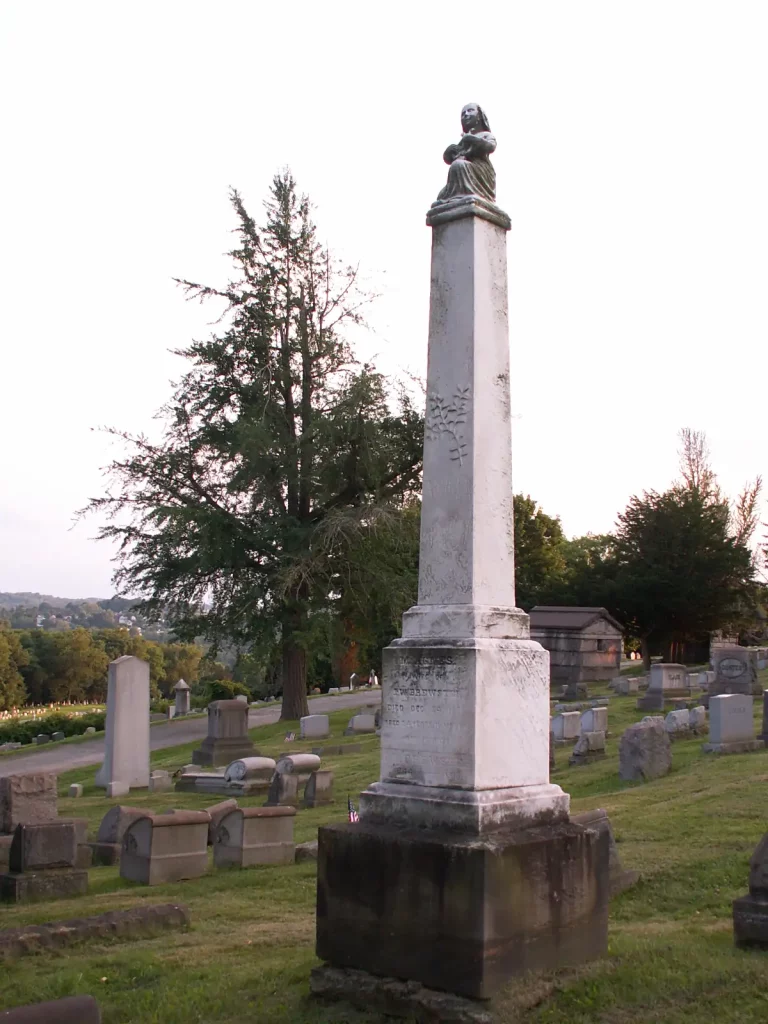
A kind of obelisk with a weirdly cartoony little statue of a lyre-playing woman at the summit. It seems the bereaved husband erected this monument to his young wife, who died at twenty-four; he lived nearly four more decades, but probably never remarried, as his name was engraved below hers by a different hand when he died.

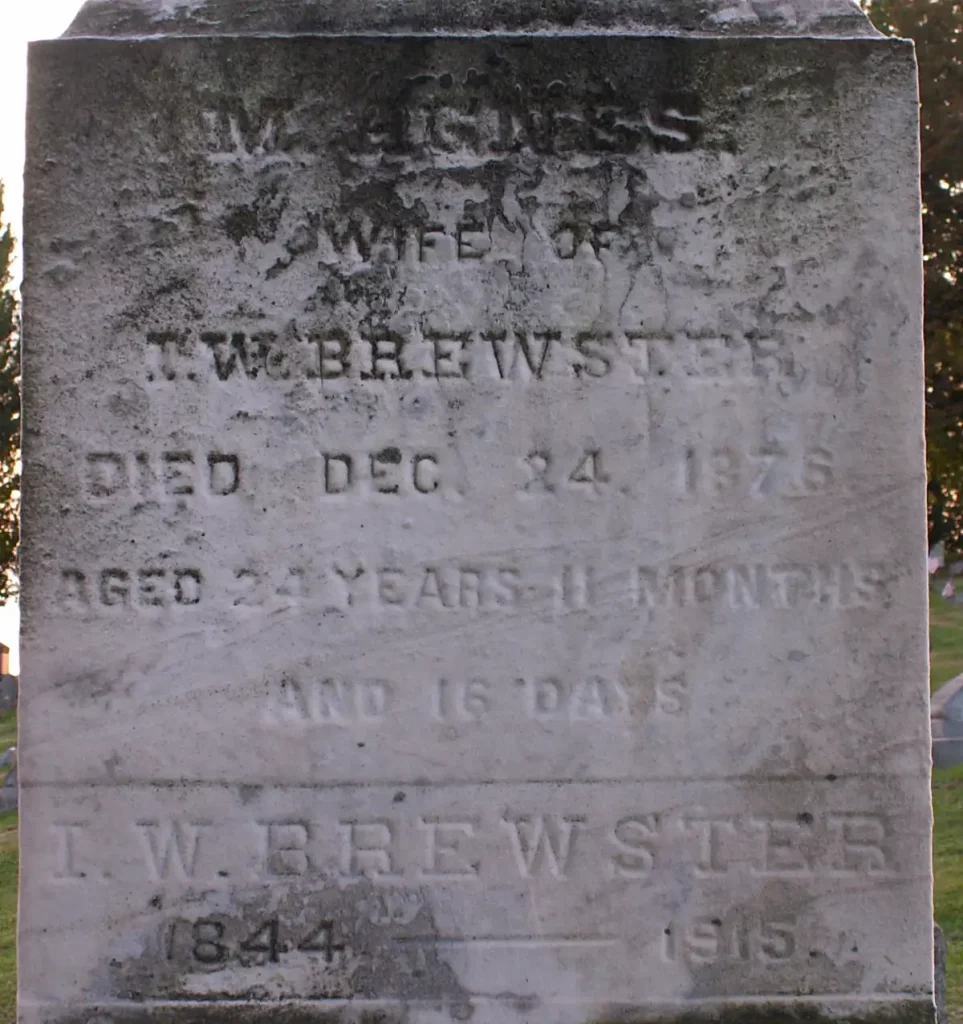

The Sunshine mausoleum from 1897, with its patient mourner uncomplainingly enduring a roosting bird, is almost certainly another ordered-from-a-catalogue mausoleum. But who is not delighted to see the name “Sunshine” engraved in cheerfully rustic letters over the entrance to a tomb? The style is hard to pin down: it has the heaviness of Romanesque, but the pointed arch suggests Gothic ambitions.
